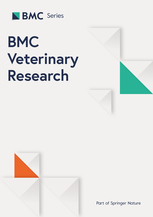Posted on August 08, 2015
Source: BMC Veterinary Research

Dillon C. Muth, Melissa A. McAlexander, Lauren J. Ostrenga, Nathan M. Pate, Jessica M. Izzi, Robert J. Adams, Kelly A. Metcalf Pate, Sarah E. Beck, Baktiar O. Karim and Kenneth W. Witwer
Background
Macaques are an excellent model for many human diseases, including reproductive diseases such as endometriosis. A long-recognized need for early biomarkers of endometriosis has not yet resulted in consensus. While biomarker studies have examined many bodily fluids and targets, cervicovaginal secretions have been relatively under-investigated. Extracellular vesicles (EVs, including exosomes and microvesicles) are found in every biofluid examined, carry cargo including proteins and RNA, and may participate in intercellular signaling. Little is known about EVs in the cervicovaginal compartment, including the effects of reproductive tract disease on quantity and quality of EVs.
Case presentation
In September 2014, a 9-year-old rhesus macaque was diagnosed with endometriosis at The Johns Hopkins University School of Medicine. Ultrasound-guided fine needle aspiration of a cyst and subsequent laparotomy confirmed diagnosis. The animal was sent to necropsy following euthanasia for humane reasons. Perimortem vaginal swabs and cervicovaginal lavages were obtained. Using a combination of methods, including ultracentrifugation and NanoSight visualization technology, approximate numbers of EVs from each sample were calculated and compared to populations of EVs from other, reproductively normal macaques. Fewer EVs were recovered from the endometriosis samples as compared with those from reproductively healthy individuals.
Conclusion
To our knowledge, this is the first examination of EVs in primate cervicovaginal secretions, including those of a macaque with endometriosis. This case study suggests that additional research is justified to determine whether quantification of EVs—or their molecular cargo—in cervicovaginal lavage and vaginal swabs may provide a novel, relatively non-invasive diagnostic for primate endometrial disease or other reproductive tract diseases.